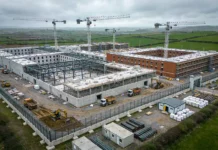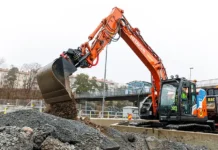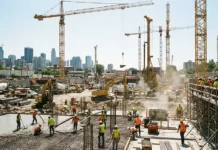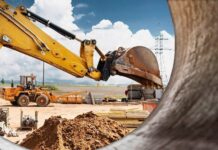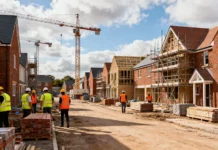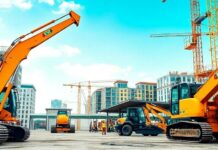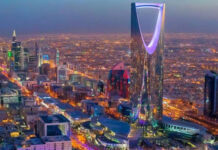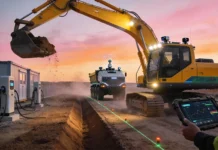Since high-profile tragedies such as the Grenfell Tower fire in 2017, fire safety in facades has become a critical concern for the industry. After the implementation of the Building Safety Act 2022, many companies in the UK are now navigating the new regulatory landscape, striving to fulfill the requirements of the Building Safety Regulator. Still, I keep asking myself and my colleagues: what can we do to make a bigger impact?
Harry Simpson, Facade Specialist-
November 2024 – Facades are not just architectural features; they play a significant role in the safety and environmental performance of buildings. However, some of them pose a serious risk in the event of a fire, particularly those made from combustible materials. Think of facades as an integral part of a building’s protective envelope. Just as a fragile parcel is safer when wrapped in high-quality packaging, a well-engineered, non-combustible facade protects a building by preventing fire spread, reducing heat transfer, and maintaining the structural integrity. The choice of materials and design directly impacts fire performance, making the facade as essential to life safety as it is to visual appeal. Unfortunately, combustible materials and poor facade design can contribute to the spread of fire, which increases the likelihood of large-scale disasters.
The Materials Matter
Let me start with the basics. Using combustible materials and lack of passive fire protection measures are two main things that cause fires. The majority of facades used to and in some cases still contain flammable components such as Expanded Polystyrene (EPS) or aluminum panels with polyethylene core. As well as the design of the facade itself, air gaps or cavities behind cladding an abundance of windows, and multiple stories can create a chimney effect, allowing hot gases and flames to move rapidly upward.
Today regulation 7 of the UK building regulations which was amended in the UK after the Grenfell Tower fire requires all materials used in external walls of high-rise residential buildings to meet strict fire safety standards. These include cladding, insulation, and decorative finishes. Basically, all materials must meet the European standard for classifying the fire performance of construction materials and not be less than A2-s1, d0. It indicates that they are very hard to ignite, produce minimal smoke, and don’t drip flaming particles when exposed to fire.
Under the new Building Safety Act, the design team holds a critical responsibility to demonstrate competence and foster collaboration throughout the material selection process. Ensuring that proposed materials meet the regulations is essential for fire safety in buildings and emphasises the need for early coordination, clear communication and informed decision-making across disciplines.
The Material and Design Dilemma: Safety vs Aesthetics?
In 2006, the UK relaxed its restrictions on the use of combustible materials in high-rise exteriors while simultaneously tightening regulations regarding energy efficiency. A trade-off between sustainability and safety has raised ongoing debate, and the Grenfell tragedy underscores the importance of carefully balancing both priorities. Since then, the industry has progressed toward stricter fire testing and certification, but major challenges remain.
Architects and developers face a dilemma: how to maintain aesthetic appeal as well as ensure fire safety? As always, there is both good and bad news. Taking the bad first, the selection of non-combustible or limited combustible cladding materials can sometimes restrict design options, but safety must always be the highest priority. The good news is that new possibilities are opening up in the field of materials science. Technology advances in glass coatings, metal composites, and high-performance ceramics provide alternatives that balance safety and beauty. These requirements force designers to be more creative with traditional fire-resistant cladding like aluminum rain screens. Moreover, traditional brick slip cladding systems are back on the rise.
Competence and Accountability: a Critical Component
A key provision of the Building Safety Act 2022 is the requirement to demonstrate competence, not only through training, but also through a combination of skills, knowledge, experience, and professional behavior. A major difference is that the Building Safety Regulator is now holding companies and individuals accountable for their actions.
It has been historically the case that one of the greatest obstacles to fire safety has been the mismanagement of modifications during the construction phase. In large-scale projects, changes are often made on site. Most often, they’re a response to unforeseen challenges or practical constraints. When it comes to big projects, facade installers might change materials, installation methods, or structural details without consulting designers, engineers, or fire safety experts. When someone does not possess the necessary experience or expertise to perform a task safely, they should not perform the task in the first place. It is as simple as that.
We Have to Talk: The Importance of Industry Collaboration
To achieve higher fire safety standards, contractors, consultants, and manufacturers must collaborate. It is important to engage suppliers early on, since they possess critical insight into system performance, materials, and recyclability. System suppliers are increasingly offering non-combustible facade solutions and fire-resistant materials, but they need to be specified early in the tendering process to be used effectively.
Existing Buildings: The challenges of remediation/ Remediation Efforts
While new construction can incorporate fire-resistant materials from the beginning, older structures present significant challenges. What should we do with the ones that were already built before we started this pivotal conversation? Fire-safe facades can be complex and costly to retrofit, particularly for buildings constructed prior to the recent changes to the regulations. As someone who is currently managing several remediation projects in the United Kingdom, I am certain that government, industry stakeholders and specialists must work together to guarantee the success of these initiatives. Naturally, we place a strong priority on facade performance and fire safety in these projects. That’s why we employ third-party fire engineering consultants to undertake a full review of any previous fire related investigations and recommended remediation works, in an effort to reach a final conclusion to the scope of work.
Learning From Tragedies
We all wish it had never happened. But unfortunately, it did, and I believe we should at least learn something from it. The Grenfell Tower fire resulted in 72 deaths and served as a wake-up call for the entire industry. The same story with the Torch Tower fire in Dubai, which exposed vulnerabilities in high-rise cladding. These events are both striking confirmation and silent reproach of neglecting fire safety and the need for stringent regulations, proactive industry practices, and continuous education. We all saw the consequences.
I am also a big believer in education. It is crucial to educate building owners, occupants, and contractors about fire safety. Training in evacuation procedures, fire suppression systems, and the proper handling of flammable materials can make a significant difference in an emergency.
In Conclusion
The Grenfell tragedy was a wake-up call that fire safety cannot be an afterthought but a priority. The Building Safety Act 2022 is a step in the right direction, but regulation alone will not drive meaningful change. We still have a lot to do, and real change starts with a shift in mindset across the industry. That is why I wanted to talk about it in this column.
Competence, accountability, and collaboration must be at the heart of how we approach faсade fire safety. Cutting corners is no longer an option, and companies that fail to adapt will face serious consequences. We must ask ourselves: are we building to meet the minimum standard, or are we truly setting new benchmarks?
If we genuinely want to prevent another tragedy, the answer must be the latter.



